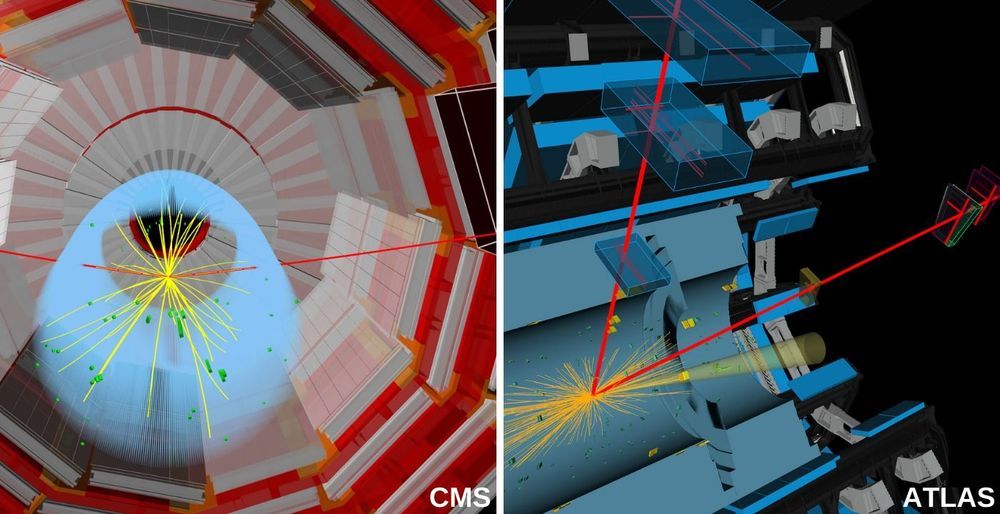Geneva. At the 40th ICHEP conference, the ATLAS and CMS experiments announced new results which show that the Higgs boson decays into two muons. The muon is a heavier copy of the electron, one of the elementary particles that constitute the matter content of the Universe. While electrons are classified as a first-generation particle, muons belong to the second generation. The physics process of the Higgs boson decaying into muons is a rare phenomenon as only about one Higgs boson in 5000 decays into muons. These new results have pivotal importance for fundamental physics because they indicate for the first time that the Higgs boson interacts with second-generation elementary particles.
Physicists at CERN have been studying the Higgs boson since its discovery in 2012 in order to probe the properties of this very special particle. The Higgs boson, produced from proton collisions at the Large Hadron Collider, disintegrates – referred to as decay – almost instantaneously into other particles. One of the main methods of studying the Higgs boson’s properties is by analysing how it decays into the various fundamental particles and the rate of disintegration.
CMS achieved evidence of this decay with 3 sigma, which means that the chance of seeing the Higgs boson decaying into a muon pair from statistical fluctuation is less than one in 700. ATLAS’s two-sigma result means the chances are one in 40. The combination of both results would increase the significance well above 3 sigma and provides strong evidence for the Higgs boson decay to two muons.
